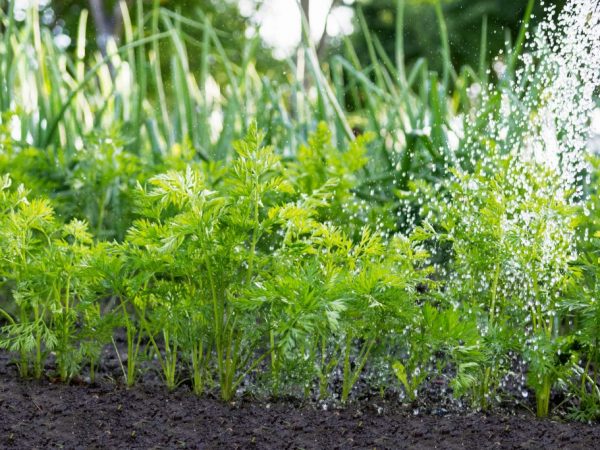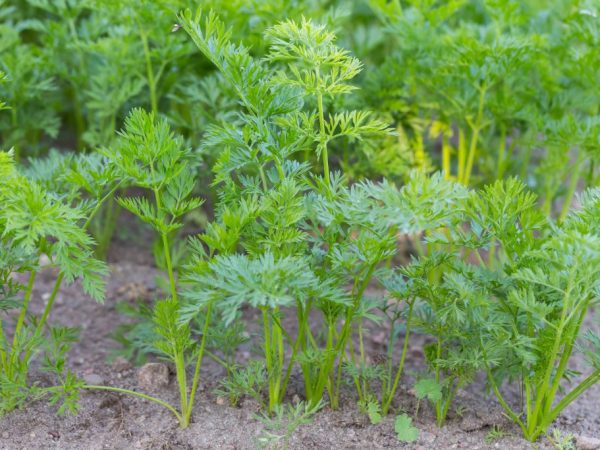Technique for watering carrots with kerosene
Carrots grow slowly in the garden, and their first shoots are so fragile that the weed does not allow it to grow. The gardener is faced with the problem of weeding the beds. How to distinguish a small sprout from the same weed? Instead of exhausting weeding, watering carrots with kerosene is used.

Technique for watering carrots with kerosene
What is kerosene
Kerosene is associated with industry and aircraft fuels. It is a refined product. Vapors in high concentration are hazardous to the human respiratory tract.
In everyday life, a clarified (driven away) product is used. Some people follow the advice of taking the substance internally for medicinal purposes at their own risk. But it is easy to process carrots with kerosene, it does not harm your health.
Precautions during operation
Processing carrots from weeds with kerosene requires safety precautions. First of all:
- Put on work clothes. It should cover all parts of the body.
- Use a mask (respirator)
- Protect your hands with thick rubber gloves.
- Protect your eyes with glasses.
The beds should not be sprayed in hot dry weather. The procedure is not carried out during the day, choose morning or evening. Children are not allowed.
Spraying technology
Weeding carrots with kerosene is safe for humans, but dangerous for weeds, crop pests and small rodents.
The first spraying is carried out at the early stages of crop emergence. Use pure product diluted with water. The approximate consumption of the substance is 100 g per 1 sq. m.
Re-spraying is recommended no earlier than after 7-14 days. During this period, the substance prevents the appearance of weeds. The last procedure is carried out 2 months before harvest.

The procedure is harmless to root crops
Processing carrots with kerosene from weeds has the following features:
- Effective only at high concentrations of the substance.
- Does not sterilize soil.
- Root vegetables do not absorb the smell of the substance.
The method is not used on an industrial scale, because the substance is explosive, it is difficult to transport and use it. For carrot beds, this treatment has been used since the 40s of the twentieth century.
Kerosene for carrots is also useful in that it kills the carrot fly, including its larvae.
Spraying is not carried out on other crops. Kerosene is ideal for carrots and parsley, but is poisonous for other crops.
Signs of substance poisoning
Be sure to consult a doctor or intoxication using available methods if, after using the substance:
- dizzy;
- nauseous, stiff;
- there is weakness, lethargy.
Do not allow the contact of a pure substance on body parts or mucous membranes: it causes severe chemical burns.
Other traditional herbicides
Spraying carrots with kerosene is an easy way to save yourself the trouble of weeding your beds. You can also water the crop with other herbicides. The people use:
- soda (sometimes diluted with soap);
- vinegar (it is applied only to the stems and leaves of unwanted herbs);
- salt (best used to clean paths, avoiding cultivated plants);
- medical alcohol (diluted in a ratio of 1 to 10 and water the soil).
For productivity, gardeners combine a chemical and mechanical method of removing weeds. This helps not to drain the soil and maintain a balance of chemistry and naturalness in the fruit.
Conclusion
The petroleum product is used not only in industry, but also for processing grass beds. They are treated with carrots and parsley. The substance destroys weeds, which allows the crop to grow unhindered.
It is important to observe safety precautions when spraying. At the first signs of poisoning (dizziness, vomiting, weakness), you should consult a doctor.


